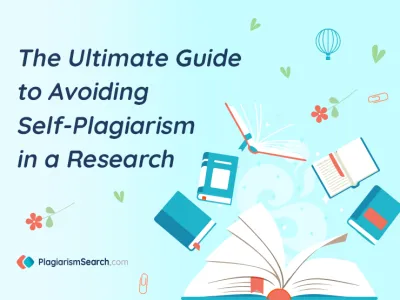
What Is Analogy in Writing and How to Use It?
It may happen that you need to explain something but you cannot merely describe an object or an action. You can take a long list of adjectives, but it will not be enough for a vivid explanation. What can be a more effective way to make the other party understand what you want to tell about than to compare one thing to another to show what makes them alike? The ultimate goal of using this comparison is to further the explanations, not to show directly. Sharing a similarity, this comparison is known as an analogy, which is common both in the written language and in everyday oral communication.
Analogy Definition
A typical definition of an analogy is a comparison made between similar things which results in clarification or explanation of the connections between them.
Let’s imagine that your exhausted and irritated mother tells you, “I cannot find the bill. It is like finding a needle in a haystack.” Will you understand what she feels? What if she told you, “It is so hard to find that bill!” The main idea is the same, but you will definitely feel less connected to her feelings.
Thus, analogy
- gives an explanation of the relationship based on the similarity of two things
- gives an explanation of complicated notions through easy ones
- highlights common aspects of two different things
- explains how something resembles another thing
Key Benefits Analogy Brings in Writing
Finding something analogous in a sentence is a task that helps to draw connections and make logical conclusions on the basis of comparison. So, what are the main functions that analogy performs in writing?
- Analogy makes abstract notions clear
Intangible ideas may confuse the readers as they find it easier to comprehend concrete and visible things. Thus, an analogy of upbringing the children can be taking care about the garden. Feeding, nurturing, and educating them with enormous dedication and patience can be compared to daily work a gardener does. It is evident that there is an analogy between the results of proper upbringing and taking care of the trees.
- Analogy establishes in-depth connections
Mere stating the fact is fine when it goes about informing others. However, when you want to touch on emotions and let others share your feelings, there is nothing as good as analogy. Saying that you feel like addressing a brick wall, talking to someone, you want to show how disappointed you feel when you do not get any response from the person you are talking to.
- Analogy makes arguments persuasive
If persuasion is the goal of your writing, no other tool can be as powerful as analogy. You need to make sure that your audience understands your message and accepts your solid arguments. Therefore, you need to make them well-targeted, creative, and comprehensive.
Types of Analogies You May Use in Writing
Typically, there are two main categories of analogy in the written language.
- Figurative analogy
To ensure argumentation and logics in your writing, one may need to demonstrate which common features two things have. So, a poet would illustrate some specific point or make some description more enhanced.
“What’s in a name? That which we call a rose
By any other word would smell as sweet.
So Romeo would, were he not Romeo called.”
- Literal analogy
Learning how to write analogies, one may start with comparing really similar things and giving explanations. A math formula of ‘b is to c as d is to e’ is the same as the sentence in the text “a human heart is similar to an engine of a vehicle”.
Tips on How to Use Analogy in a Sentence
- Choose simple examples and common objects
If you choose understandable concepts and objects for your analogy, you will help your readers not to be confused with your writing. Getting back to the upbringing of children, an analogy of building will be less effective than that of gardening. People rely on their own experience while reacting to what they read or hear about. It is much easier to fancy how a tree is growing than how a boat is built.
- Focus on similar and different features of the objects
Pay special attention to subtle differences between the objects and explain that as vividly as you can. Make use of all possible connections to let the readers get the image you want.
- Inspire your audience
Make your comparisons memorable and encourage others to take some action. Think about your won potential reaction, while choosing the picture or word for an analogy.
When Is It Appropriate to Use Analogies?
Analogy in writing can play a crucially important role when the author wants to help the readers understand a new or complicated topic. Its key aim is to explain, but this should not be a boring way to repeat the same ideas. What you do is taking effort to make an impression and create understanding. The reader, surprised with your comparison, will remember your idea and reflect on it again and again. That is what you have aimed at!
Please note that complicated imagery and excessively complicated analogies will not let you explain the notions. Instead, you will cause confusion and misunderstandings. Think about your targeted audience as you can compare and contrast only the things they know about. Make your analogies as simple and universally familiar as possible if you are addressing a general audience. You have to aim at immediate understanding and obvious connections between the things. You will fail if your audience wonders about how the two things are related.
What is an example of analogy that can explain the meaning of this term in writing? Famous lines of Forrest Gump: “Life is like a box of chocolates—you never know what you’re gonna get” appeal to the viewers’ feelings. It draws parallels between the unexpected things that happen daily and surprise one gets with a chocolate taken out of the box with seemingly identical sweets. This phrase has stuck in the mind of the audience for years! Creating your own analogies, you can also aim at such long-term effect on your target group. Be creative and surprise others!



